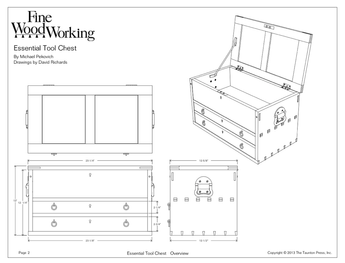I have just made some trials with mortice and tennon joints in redwood.
I found that using PVA glue I had terrible trouble on joints that had glue spew out, as colour dye would not take on any areas with the dryed glue on.
My question is two fold,
What is the best way to tackle gluing up so this does not happen?
I see Aliphatic glue ( ie Titebond) can be cleaned up using water, what is the best way to go about doing this, and how do I know when it is all out of the wood grain?
I have not used this type of glue and would appreciate any help in application.
Are there any other adhesives that you can use for interior joints that take stain without a clean up operation?













Replies
S_
One way to prevent glue spew from causing finishing troubles is to apply masking tape around the joint where the glue might spew. When the glue has set enough that it won't run, just peel up the tape.
IMHO trying to clean up glue with water almost guarantees you'll have finishing problems. IME the water thins out the glue and allows it to penetrate into the wood. Then the only way to completely remove it is to scrape, plane or sand away all the wood so affected. I never try to clean off glue with water from unsealed wood I'm planning to finish (rather than paint).
I wait until the glue gets to its "rubbery" stage and then just peel it off. The rubbery stage is when it no longer runs, it's no longer tacky, but it's not dried hard: it's still flexible, but it's not liquid inside or out. With a scraper or a putty knife the glue comes right off. I've had no finishing troubles when I've done this.
Alan
Have you tried Tite bond wood moulding glue? Only thing is, it isn't Type 2 water resistant .I havn't seen any strength tests on it so far but the squeeze out is easy to scrape off once it becomes rubbery.I use it on mitered crown
I may be in the minority here, but part of my solution is to not use too much glue. In a M&T joint, for example, I use glue, carefully spread, only in the mortise, not on the tenon. My reasoning is that when inserting a well fit tenon, the glue will be scraped off at the point of insertion, doing no good anyway. Also, leave a bit of room at the bottom of the moritse for the glue to collect; otherwise it will squeeze out as it must go somewhere. Can't compress a liquid. 1/16" or so. In dovetails, glue only the pins, not the tails. Same reasoning. In a sliding dovetail, only the slot. Etc.
Experience will help you to get the glue application just right, so that squeeze out is minimized. Sometimes you can put a sealer coat oon the areas of a piece that will be exposed surfaces prior to assembly and glue up. If you have a serious squeeze out to deal with, a tile grouting sponge wetted and wrung as dry as possible is helpful. Keep rinsing the sponge and rewashing till the glue seems thoroughly cleansed. It is important to try to avoid getting into this position by carefully metering the glue application because the water swells your parts tightening the joints and driving out even more glue and then when everything shrinks your joint is short of the desired amount of glue.
This forum post is now archived. Commenting has been disabled